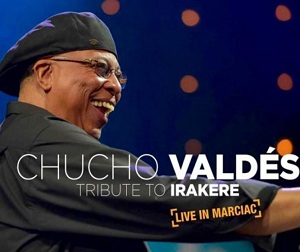 For some time now, there has been talk of racism in Cuban music, within different spaces devoted to criticism and musical positioning. And to contextualize this, a specific historical period is utilized, to be precise, that which began in 1959.
For some time now, there has been talk of racism in Cuban music, within different spaces devoted to criticism and musical positioning. And to contextualize this, a specific historical period is utilized, to be precise, that which began in 1959.
The history of music in Cuba has been profoundly marked by mestizaje since the nationality’s very conception, in close communion with the war against Spanish colonialism. The birth of nationalist, pro-independence sentiment was anti-colonialist, and anti-racist by implication and in principle. Is it possible to label as racist a Revolution that had as its political foundation the abolition of slavery? Recognizing the symbiosis of Cuban culture with emancipatory ideals, even before 1868, is perhaps the most important cultural development that shaped the thinking of great Cubans, with the obvious reference being José Martí, who continues to serve as an obligatory beacon in this sense.
Now, if we begin to mention the names of those who laid the foundations of our music, we will note that there is no place for racism, and much less for splitting apart the solid marriage of diverse musical expressions, from a current point of view, as is attempted practically every day.
Two names from before the 20th century stand out in terms of academic musical performance and composition: White and Brindis de Salas, but when we consider the more popular plane, others must be added, including Pepe Sánchez, Miguel Faílde and the avalanche represented by Sindo, Matamoros, Siro and all those who illuminated the nascent 20th century.
Not to be overlooked are Anacaona, María Teresa Vera, Guillermina Aramburu, Celia Cruz, Enriqueta Almanza, Isolina Carrillo, Ángel Díaz, the “feeling” movement, Aida Diestro and his Quartet, Beny Moré, Compay Segundo, Lorenzo, Reynaldo and Caridad Hierrezuelo, Joseíto Fernández and many more, providing clear evidence of the marked amalgam that is Cuban music.
With the victory of 1959, we must add to this vast chromatic scope, the opening of doors to what was missing in almost all cases: access to studies and social recognition. With the young Revolution, came the organization and development of other realities that led to the full enjoyment of sectors that had faced discrimination, not only based on skin color, but on the depths of pockets, as well. How can the process begun in 1959 be considered racist, when it made possible that children of longshoremen, managers, and doctors were all seated in the same classroom?
The creation of art schools is the best example of anti-racism our music has experienced. If there were racism in the Revolution, the Cuban Modern Music Orchestra, in 1967, would not have included Paquito D´Rivera, Oscar Valdés, or Chucho Valdés, and possibly, Irakere would never have emerged. Or perhaps Pedrito Calvo, Mayito el Flaco, Pedrito Fajardo or Mayito Rivera would have been excluded from the Van Van, based on the color of their skin. It is clearly ridiculous to imagine racism as a policy or directive in our music. A quick review of the broad scope of Cuba’s current musical panorama provides enough evidence to understand that asserting this is simply running blindly behind those who have made a deal with the devil.
(Source: Granma)